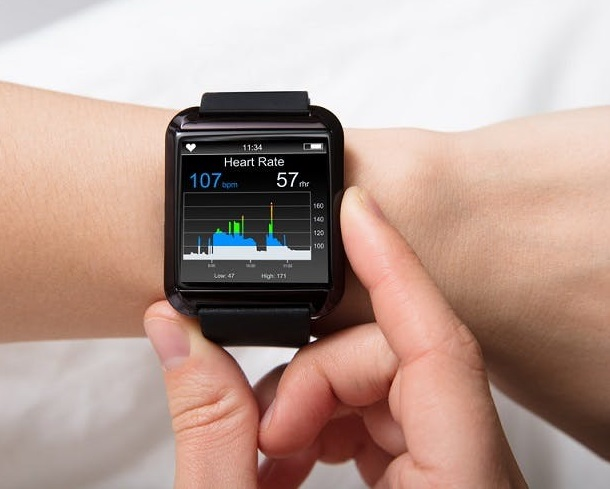Smart watch monitoring

Smart watch monitoring
While not originally designed as medical devices, smart watches are becoming increasingly powerful healthcare tools thanks to a range of applications and features that have been added to them by manufacturers like Apple, Google and Samsung.
Apple in particular has consistently demonstrated a commitment to turning the Apple Watch into a device that can monitor and assist with health. In September 2020, the Apple Watch Series 6 launched with new blood oxygen measuring functionality, and Apple is reportedly embarking on a series of health studies with research institutes to learn more about how changes in blood oxygen levels can signal the presence of respiratory conditions such as asthma.
Since the launch of the Series 4, Apple Watches have also been able to take an echocardiogram (ECG) using an electrical heart sensor, and check for an irregular rhythm that could mean the wearer has atrial fibrillation (AFib), a heart condition that can lead to complications such as blood clots, stroke and other heart-related issues. An early 2020 clinical trial cast doubt on the Apple Watch’s ability to detect AFib with much accuracy, and experts have also stated that widespread screening for conditions such as AFib – especially among the younger age groups who are likely to purchase a smartwatch – may not be necessary or particularly useful.
However, Apple has continued to improve the accuracy of its Apple Watch ECG, recently gaining FDA clearance for an updated version of the feature that can detect a category of the condition known as AFib with high heart rate. Samsung and Fitbit have also followed in Apple’s footsteps in the years since the release of the Series 4 by releasing their own smartwatches with ECG applications, and the Samsung Galaxy Watch 3 also offers blood pressure monitoring – although it needs to be calibrated first with a dedicated blood pressure monitor, and every four weeks thereafter. The Galaxy Watch 3’s ECG and blood pressure monitoring features were also initially only available to users in South Korea before being rolled out more widely.
Other simpler, yet still effective, health applications that have been integrated into smartwatches include sleep cycle monitoring and tracking, activity trackers and movement reminders – which can help combat excessive weight gain – and guided breathing and meditation exercises, which are beneficial to mental health. Apple, Google and Samsung have also all introduced handwashing apps and reminders since the onset of the Covid-19 pandemic that promote regular, thorough handwashing.
There are risks associated with integrating too many tools and features with a specific medical purpose into a gadget that is not specifically designed to be a medical device, as they can be less accurate, cause consumers to over-treat conditions that may not exist or be particularly serious, or prevent them from seeking true medical assessments with the proper equipment. On the other hand, it can be argued that making these tools more mainstream could prevent the onset of more serious conditions if symptoms are discovered early.
There is also the question of data handling, and whether consumers should be putting so much of their health and biometric data in the hands of non-health specialists like Google (which also owns Fitbit), Apple and Samsung. Google for one has already been involved in multiple incidents involving the inappropriate or secretive transfer of medical data, such as Project Nightingale, and the DeepMind partnership with Royal Free Hospital. Companies have an obligation to be clear and transparent about the health limitations of their devices as well as how data will be used, while customers should make sure they read the fine print on their smart watches and go in with both eyes open.


Your Comment :